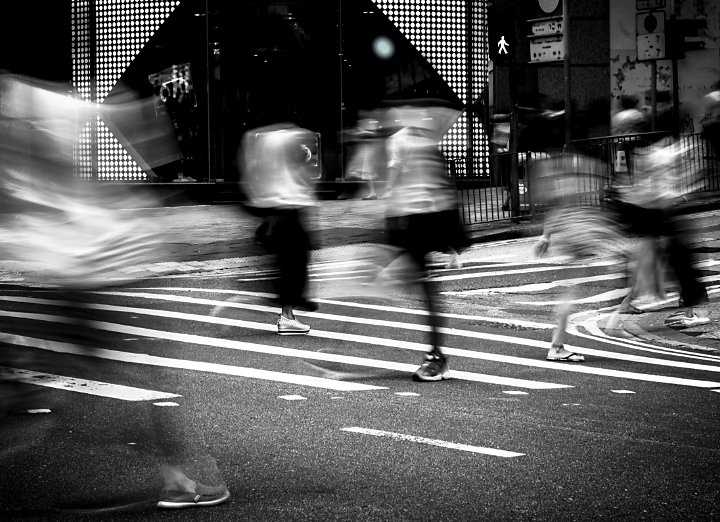Street Photographers Things To Know Before You Buy
Street Photographers Things To Know Before You Buy
Blog Article
Not known Factual Statements About Street Photographers
Table of ContentsThe 4-Minute Rule for Street PhotographersStreet Photographers Can Be Fun For AnyoneGet This Report on Street PhotographersAbout Street PhotographersThe Only Guide for Street Photographers
Street digital photographers do not always have a social purpose in mind, yet they prefer to isolate and record moments which could or else go undetected.He was influenced by several of those who influenced the road digital photographers of the 1950s and '60s, he was not mainly interested in recording the spirit of the street., who worked side by side with photographers attempting to capture the significance of metropolitan life.
Due to the somewhat primitive modern technology available to him and the lengthy direct exposure time required, he had a hard time to capture the pressure of the Paris streets. He trying out a collection of photographic approaches, attempting to discover one that would certainly enable him to record movement without a blur, and he discovered some success with the calotype, patented in 1841 by William Henry Fox Talbot. As opposed to Atget, professional photographer Charles Marville was hired by the city of Paris to produce an encyclopaedic paper of Haussmann's city planning project as it unravelled, hence old and new Paris. While the photographers' topic was basically the same, the results were significantly various, showing the impact of the professional photographer's bent on the character of the photos he generated.
Given the fine quality of his photographs and the breadth of material, designers and musicians typically got Atget's prints to utilize as referral for their very own job, though industrial passions were hardly his main motivation. Instead, he was driven to photo every last residue of the Paris he loved.
The smart Trick of Street Photographers That Nobody is Talking About
They reveal the city via his eyes. His job and essential understanding of photography as an art form offered as motivation to generations of photographers that followed. The following generation of street professional photographers, though they likely did not describe themselves therefore, was ushered in by the photojournalism of Hungarian-born photographer Andr Kertsz.
Unlike his peers, Brassa used a larger-format Voigtlnder camera with a much longer exposure time, compeling him to be much more calculated and thoughtful in his practice than he may have been if using a Leica. (It is assumed that he may not have had the ability to afford a Leica during that time, however he did, nonetheless, utilize one in the late 1950s to take colour photographs.) Brassa's photographs of the Paris abyss illuminated by man-made light were a this discovery, and the collection of the series that he released, (1933 ), was a major success.
Cartier-Bresson was a champion of the Leica cam and among the first professional photographers to maximize its capabilities. The Leica enabled the professional photographer to interact with the surroundings and to record moments as they took place. Its relatively little dimension additionally helped the professional photographer discolor right into the history, which was Cartier-Bresson's recommended method.
How Street Photographers can Save You Time, Stress, and Money.
It is due to this fundamental understanding of the art of picture taking that he is typically attributed with discovering the tool around again about a century since its invention. He took pictures for greater than a half century and affected generations of digital photographers to trust their eye and instinct in the moment.
These are the inquiries I will try to respond to: And afterwards I'll leave you with my own meaning of street digital photography. Yes, we do. Let's begin with specifying what a definition is: According to (Street Photographers) it is: "The act of defining, or of making something guaranteed, distinctive, or clear"
No, definitely not. check my source The term is both restricting and misleading. Sounds like a street photography should be images of a roads right?! And all street photographers, other than for a small number of absolute beginners, will totally appreciate that a road is not the crucial element to road digital photography, and actually if it's an image of a road with maybe a couple of dull people doing nothing of interest, that's not road photography that's a snapshot of a street.
About Street Photographers
He makes a legitimate point don't you believe? While I agree with him I'm not sure "honest public digital photography" will certainly capture on (although I do kind of like the term "honest digital photography") because "street digital photography" has actually been around for a long time, with numerous masters' names connected to it, so I think the term is here to stay (Street Photographers).
Inside?! I hear you yell as you tremble your clenched fist to the skies. Why not? You can contend the beach, at a festival, in an alley, in a park, in a piazza, in a coffee shop, at a gallery or art gallery, in a city terminal, at an event, on a bridge, under a bridge ...

The Single Strategy To Use For Street Photographers

Report this page